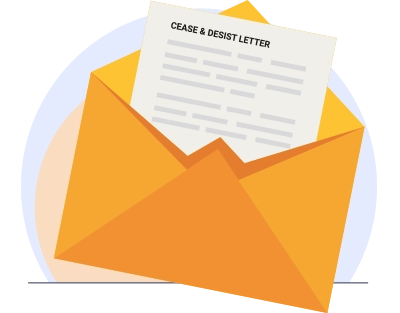
Short answer: a cease and desist letter it’s a written demand to immediately stop a defined behavior (cease) and to avoid doing it again (desist). For ecommerce teams, legal departments, and brand managers, this tool helps protect pricing, reputation, and distribution control—especially on marketplaces like Amazon and Walmart—without jumping straight to a lawsuit.
Table of Contents
What is a cease and desist letter.
A cease and desist letter is a formal notice that tells a person or business to stop a specific unlawful or harmful activity—and not restart it. It isn’t legally binding by itself, but it puts the recipient on notice: comply now or face potential legal action. That’s why many brands use it as the first, fastest, and most cost-effective step before court.
Key Elements of a Cease and Desist Letter
An effective cease and desist letter goes beyond legal formalities — it communicates authority, clarity, and intent. Whether you’re addressing unauthorized sellers, trademark misuse, or MAP violations, a strong letter should include the following components:
Identification of the Parties
Clearly identify who is sending the letter (the brand or rights holder) and who is receiving it (the individual or business engaged in the violation).
Description of the Violation
Specify the listings, SKUs, or activities in question. Include URLs, product IDs, or screenshots to make the infringement unmistakable.
Legal Basis for the Claim
Reference the law, agreement, or marketplace policy being violated — for example, trademark or copyright infringement, breach of MAP policy, or violation of Amazon’s Brand Registry rules.
Demand to Cease the Activity
State explicitly what action must stop — such as removing listings, halting sales, or discontinuing use of protected assets.
Deadline for Compliance
Provide a clear and reasonable timeframe (typically 3–7 business days) for the recipient to comply before further escalation.
Consequences of Non-Compliance
Explain what will follow if the recipient fails to act — this might include reporting to the marketplace, issuing a final warning, or pursuing formal legal enforcement.
When issued in sequence — initial notice -→ follow-up – → final warning — cease and desist letters create a documented trail of professional, proportional communication.
This record becomes powerful evidence for brands seeking removal through marketplaces or preparing for potential legal action.
Common uses of cease and desist letters
These letters show up in many contexts, but for brands they are especially valuable in four key areas:
- Intellectual property enforcement. Stopping unauthorized use of trademarks, copyrights, patents, or trade dress.
- Unauthorized seller removal. Targeting unapproved sellers who list products without permission on marketplaces like Amazon or Walmart.
- Contract breaches. Enforcing NDAs, reseller agreements, or non-compete clauses when they are violated.
- Harassment or defamation. Putting an end to libel, slander, or ongoing abusive behavior.
Each case is different, but the logic is the same: a clear, professional letter gives the sender leverage without immediately involving the courts.
What to do if you receive one
Being on the receiving end can feel intimidating, but ignoring it is the worst option. The smart response is to:
- Read carefully. Understand exactly what action is being demanded.
- Consult counsel. A lawyer can explain your rights and risks.
- Take timely action. Sometimes fixing the issue quickly prevents escalation and saves money.
Handled thoughtfully, even a strong cease and desist letter can be resolved without lasting damage.
Beyond the letter: the bigger brand protection picture
Cease and desist messaging is powerful, but it’s just one tool. At Brand Alignment, we combine it with MAP monitoring, test buys, and pricing enforcement to create a full strategy. The goal isn’t to flood sellers with warnings—it’s to restore lasting control. When letters are part of a larger brand protection framework, they deliver far more than temporary relief.
How to Write a Cease and Desist Letter (Quick Overview)
Writing a cease and desist letter doesn’t have to be overly complex. The key is clarity: identify the problem, explain why it violates your rights, and state what action you expect within a specific timeframe. To make the letter more effective, it’s best to use official letterhead—it gives the document a professional and serious tone, signaling that the matter is being handled formally.
While every case is different—and legal review is always recommended—a simple structure often looks like this:

Cease and desist letters can be the turning point between marketplace chaos and brand stability.
For more marketplace protection insights, follow us on Linkedin





